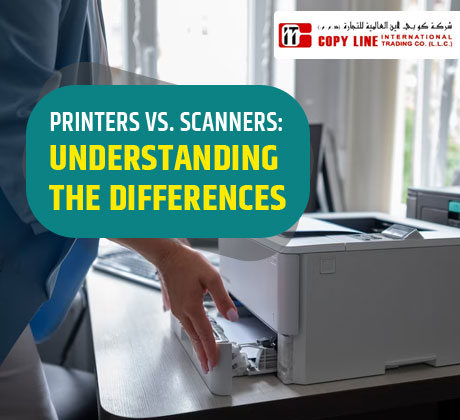
Discover the key differences between printers and scanners in this informative blog article. Explore options for photocopiers for sale and office printers to optimise your document management and boost productivity.
The way we handle documents and photos has changed due to the widespread usage of office printers and scanners. Although both of these devices are necessary for a well-run office, they have different functions and meet various needs and expectations. In this post, we’ll look at the key differences between printers and scanners and their individual functions, advantages, and functions in modern offices.
Printers are necessary tools to convert digital documents or data to paper. Their main function is to create apparent copies of documents, pictures, and other visual resources. Printers’ fundamental characteristics include:
Printing Quality and Speed –Typically, inkjet printers work well for low to moderate print volumes and have great photo printing capabilities. Large amounts of text-based documents can be swiftly and clearly produced using laser printers.
Accessibility – In order to accommodate diverse user preferences, modern printers provide a variety of connectivity choices, including USB, Wi-Fi, Ethernet, and cloud-based printing.
Application – In an office setting, printers are perfect for creating expert documents, reports, marketing materials, and other printed products.
On the other hand, scanners are devices made for transforming physical material like photographs, documents, and images into digital formats. Thanks to this change, users can effortlessly save, edit, and share these files. Scanners’ fundamental characteristics include:
Resolution and Colour Depth for Scanning –The detail captured in a scanned image depends on the scanner’s resolution, typically expressed in dots per inch (DPI). Greater colour depth enables scanners to record more hues and tones, producing more accurate and lively reproductions.
Optical Character Recognition (OCR) –A lot of modern scanners use OCR technology, which enables them to turn scanned documents into editable and searchable text files.
Application – Scanners are crucial in offices because they make it easier to easily organise data, digitise important documents, and easily share materials.
It is crucial to consider your office’s unique needs and operations when choosing between printers, scanners, or multipurpose printers. Observe the following elements:
Consider your office’s specific needs, budgetary constraints, and long-term objectives before purchasing office supplies like printers and photocopiers for sale. You can transform the productivity of your office, boost teamwork, and help create a more environmentally friendly workplace by making wise choices and investing in the right equipment.